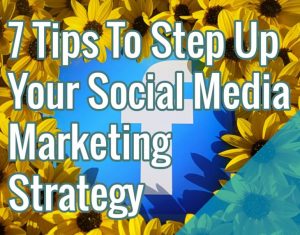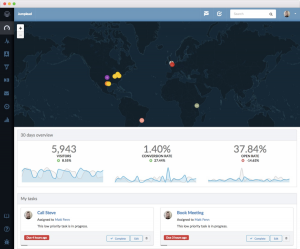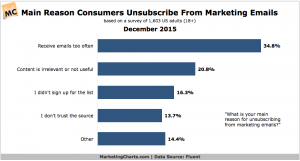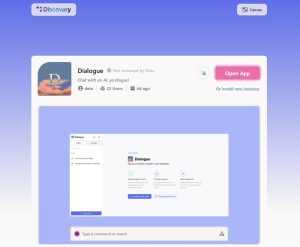— July 24, 2019
Starting your own software as a service (SaaS) business is an appealing way to become an entrepreneur. Just come up with your software solution, deploy it, and become indispensable to fellow business owners everywhere—right?
Of course, it’s never that simple. Coming up with and creating your software is the easy part. The hard part is turning your idea into an actual business that enough customers are willing to pay for.
With that in mind, once they finalize their business concept, SaaS founders need to immediately turn their attention to their business’s finances. Building a solvent business model depends on you figuring out the numbers early.
Not sure where to start? Here are six financial tips every SaaS should keep in mind when building out their business.
Let us show you the benefits of
Chanty team chat for your business

Validate your idea before committing real funds
Lots of articles on the web will convince you that all you need to start your SaaS or other ecommerce business is an MVP—minimum viable product—that you can start selling. You can always tweak your MVP later as you garner feedback and experience.
Even spending that much of your resources and time, however, can be wasteful. If you build an MVP without a real understanding of whether people will pay for it, you’re essentially throwing money away unless you’re lucky enough to strike gold on your first pass.
You don’t need to build your software until you can demonstrate interest from potential customers. To measure that interest, use landing pages to gauge whether people want to learn more about your idea.
The process is fairly simple:
- Set up several versions of a landing page describing what your software does, how it works better than that of competitors, how much it costs, and other pertinent info that can fit “above the fold” of the page. Use a service like Unbounce or Instapage to set up A/B tests.
- Spend a few bucks on advertisements on Google and Facebook, drawing the attention of users outside your inner circle.
- Test to see how many not only click your ads, but complete your “call to action” (CTA) on each page, such as signing up for the company newsletter, or to gain “early access” to the product.
- Continue to tweak and test your landing pages for optimal copy, page layout, and CTAs until you’re confident you are doing the best job possible marketing your software.
If your CVR (conversion rate, or the percentage of people who complete your call to action after clicking your ad) is higher than a few percentage points (2% on mobile, 4% on desktop), you’ve got enough data to move ahead and build out your service with the confidence that people are willing to pay for your solution.
Don’t miss an update! Have every post delivered directly to your inbox
Thanks for your interest in Chanty!
Learn and track the important SaaS metrics
Lots of businesses know they need to hit certain metrics in order to remain profitable and keep the company going. Lots of these metrics are the same across the board, for almost every business—CVR, for example.
When writing your business plan—a must-have document for a business at any stage—keep in mind the following metrics and how you plan to perform well on each of them:
- LTV: Lifetime value, or a prediction of the net profit you’ll get out of your relationship with a customer.
- CAC: Customer acquisition cost, or the total cost of turning someone from a lead to a paying customer. Things like the cost of running an ad campaign, or how much you spend on CRM software, is factored into this metric.
- MRR: Monthly recurring revenue is the income a company can reliably expect every month.
- ARR: Annual recurring revenue is the income a company can reliably expect each year.
- ARPA: Average revenue per account, or your monthly or yearly recurring revenue divided by the number of customers you have.
- Churn: This isn’t an acronym—your churn rate is the percentage of customers you lost during a certain time frame, such as per month or per quarter.
- NPS: Net Promoter Score, or a measurement of the loyalty that customers feel toward your business, based on the question “How likely is it that you would recommend our company to a friend or colleague?”
You can use a service like ChartMogul to get help tracking and measuring your metrics performance on a recurring basis.
Lock in your customer base with annual plans
Pricing strategy is one of the more difficult aspects of being a business owner. In a perfect world, we’d know the maximum value we could charge without losing a single prospective customer—but it’s never that easy.
To start, do research and see what your competitors charge for similar services—and try to beat those prices, if possible. If you lack competition (a rare occurrence), use your landing page tests to see what people would be willing to pay for your solution.
Once you choose a price (or several price tiers), the most efficient way to bill your customers is with annual subscriptions. Even if you have to offer these plans at a discount, this billing method has two major benefits.
For one, annual billing locks in your customers, giving you consistent cash flow. Consistency is one of the most important aspects of healthy business cash flow—without it, you won’t be able to weather financial setbacks, or bridge cash flow gaps that arise when your own bills come due before your revenue comes in. Knowing what’s going to end up in your bank account every month beats up-and-down cash flow.
Secondly, focusing on annual subscriptions will get you out of the mindset of needing to always acquire new customers. That’s not where long-term profitability lies. As we’ll discuss below, you should look toward retaining customers, not finding new ones.
Venture capital is difficult to obtain
In 2018, U.S. venture capital investment reached an all-time high of $ 130.9 billion. If you’re a SaaS founder and think that your idea is worth venture investment, there’s no better time than now to seek it.
Here’s the thing, however: Less than 1% of all businesses receive venture capital. The process is arduous, the use cases are few, and you’ll likely need industry connections in order to get a meeting, much less approval.
And if you’re a woman, or a person of color? Your chances of receiving venture capital for your new business are disturbingly low.
In some situations, for some businesses, venture capital is an important tool for staying afloat while deferring profitability. The trade-off is that venture capitalists expect the business to provide a 10x return, at least, on their capital. That will put the business on a different path than if the goal was to be healthy and profitable from day one.
Venture capital makes for splashy headlines, but it’s not often a real option for most businesses, even SaaS businesses.
Debt financing is a common path for funding
If you are seeking business funding to help cover working capital shortfalls, or to take advantage of a growth opportunity that requires investment beyond your profit margins, debt financing is a much more common route for small business owners.
Using a small business loan, SBA loan, line of credit, credit card, or even a personal loan can give you access to a pool of funds to help grow your business responsibly, while maintaining control of the company.
Taking on debt is always a risk in any context, but it’s much more attainable and practical move for small business owners. Only take on debt if you have done the research to prove you can repay your loan (which may be required by some lenders before you are approved).
Build towards monetization and retention
As mentioned above, your primary financial consideration once you get your business up and running should be turning your attention to monetization and retention, rather than acquisition.
When you first start your business, acquisition is crucial. It’s how you build a customer base. But it reportedly costs five times as much to acquire a new customer as it does to retain an existing one. Existing customers are also easier to sell to than new customers, and they’re more likely to spend more money and try new products.
Eventually, you’ll find that you will get more value out of marketing to, addressing the needs of, and improving your SaaS for your existing customers than you would making your pitch to yet another new customer.
Conclusion
From the very beginning of your time as the owner of a SaaS business, you need to have money on your mind. Whether you’re testing different business model variables, comparing performance metrics to industry ideals, or calculating the APR on a business loan, the numbers must inform your decisions.
Without keeping a close eye on your bottom line, even the SaaS business with the lowest overheads can face rocky cash flow periods that can lead to early failure. Keep these tips in mind as you grow your business and you’ll be much better prepared when a cash crunch hits.
If you have additional tips on what SaaS should know from a financial standpoint, I’d love to hear them in the comments.
Business & Finance Articles on Business 2 Community
(43)
Report Post







